Broad Plaza an inviting outdoor space in new museum’s shadow
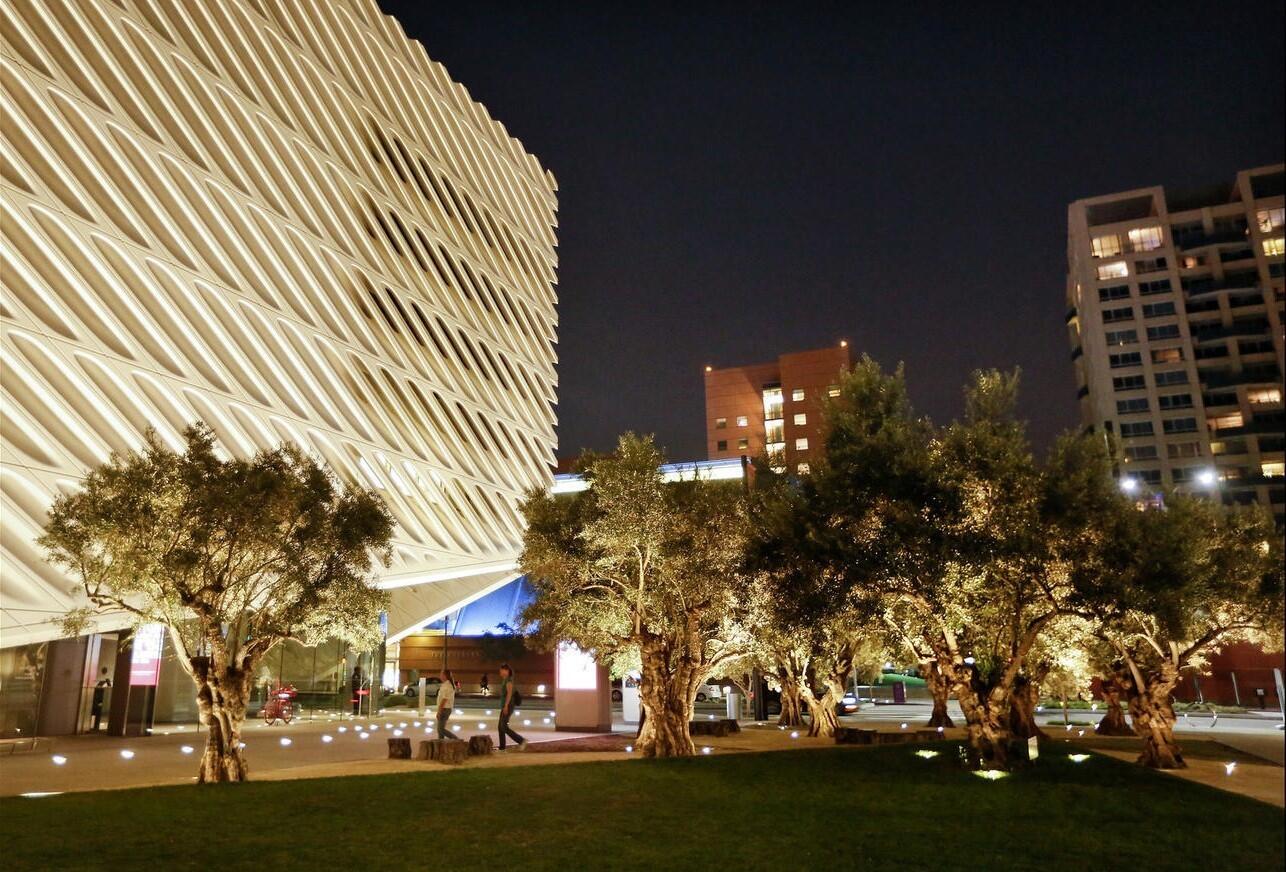
The canopy of olive trees creates a “green space” break from the surrounding tall buildings and hustle along Grand Avenue.
(Mark Boster / Los Angeles Times)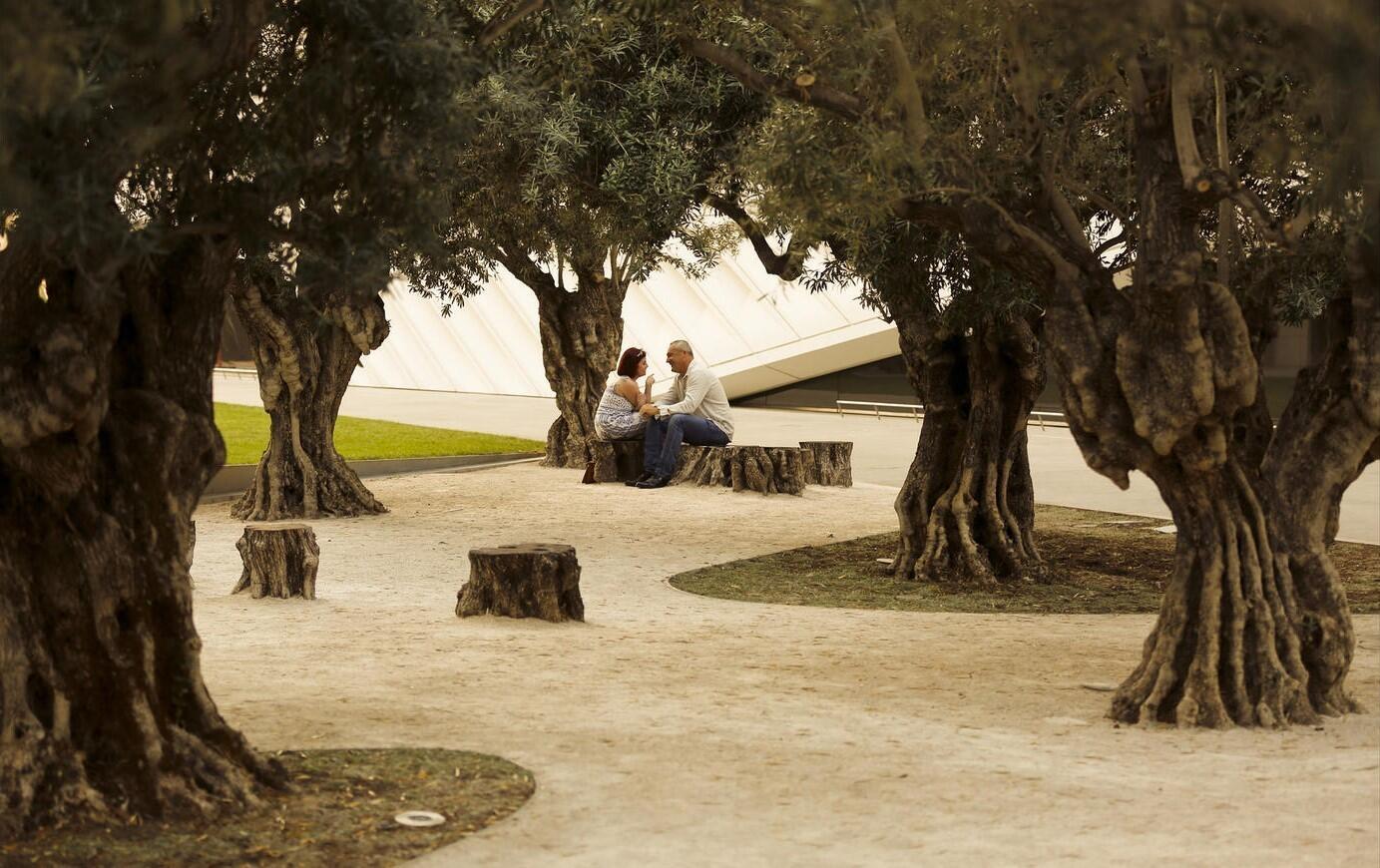
Tracy Keatinge and Thomas Owen sit under the canopy of the fairy-tale-like grove of 100-year-old Barouni olive trees designed to lure you in from the street.
(Mark Boster / Los Angeles Times)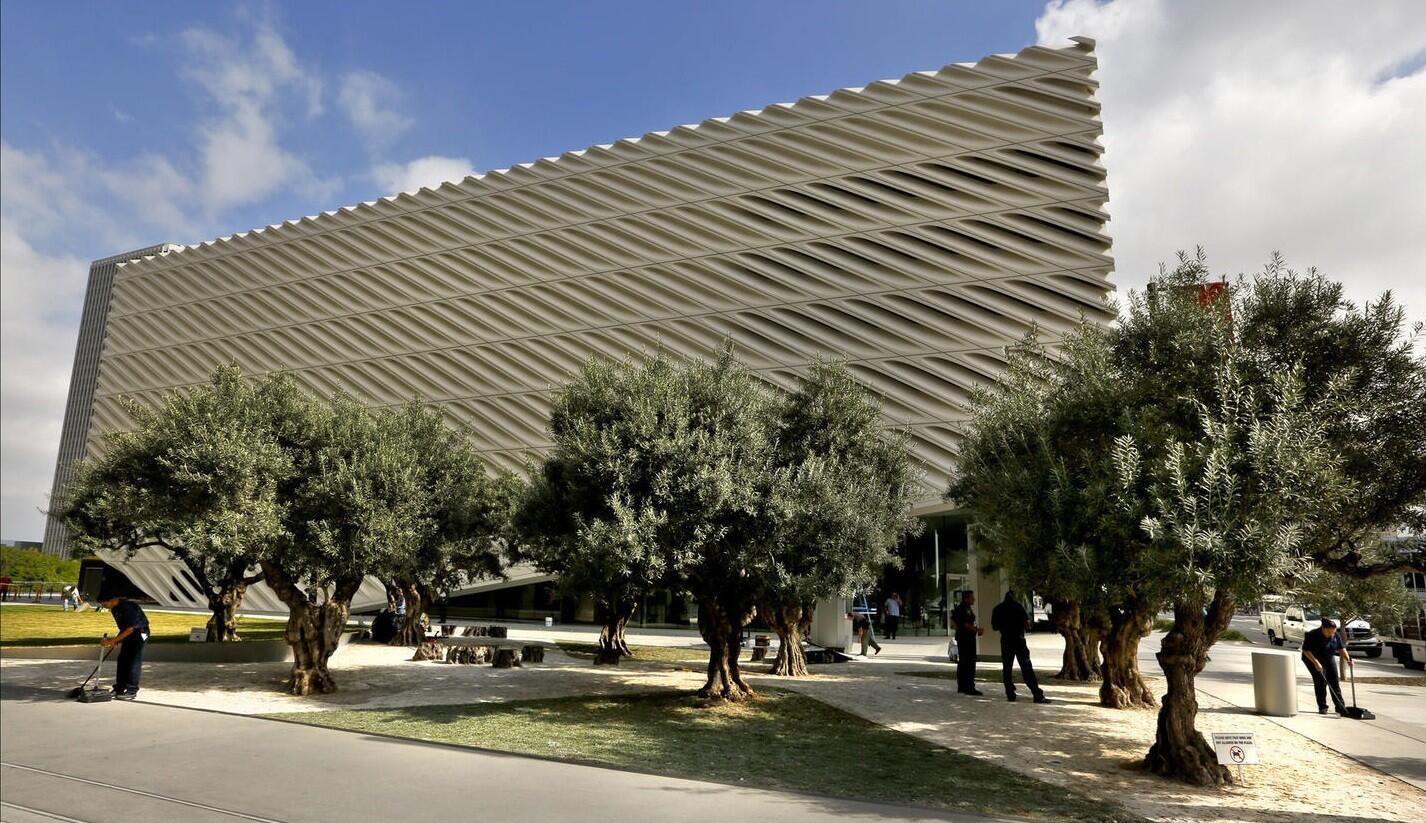
The urban landscape of the new Broad Plaza, the public space associated with downtown’s newest museum, is more organic, flirting with civic engagement, simplicity and the shared space that exists between apartment dwellers, museum-goers and, yes, lunchtime visitors.
(Mark Boster / Los Angeles Times)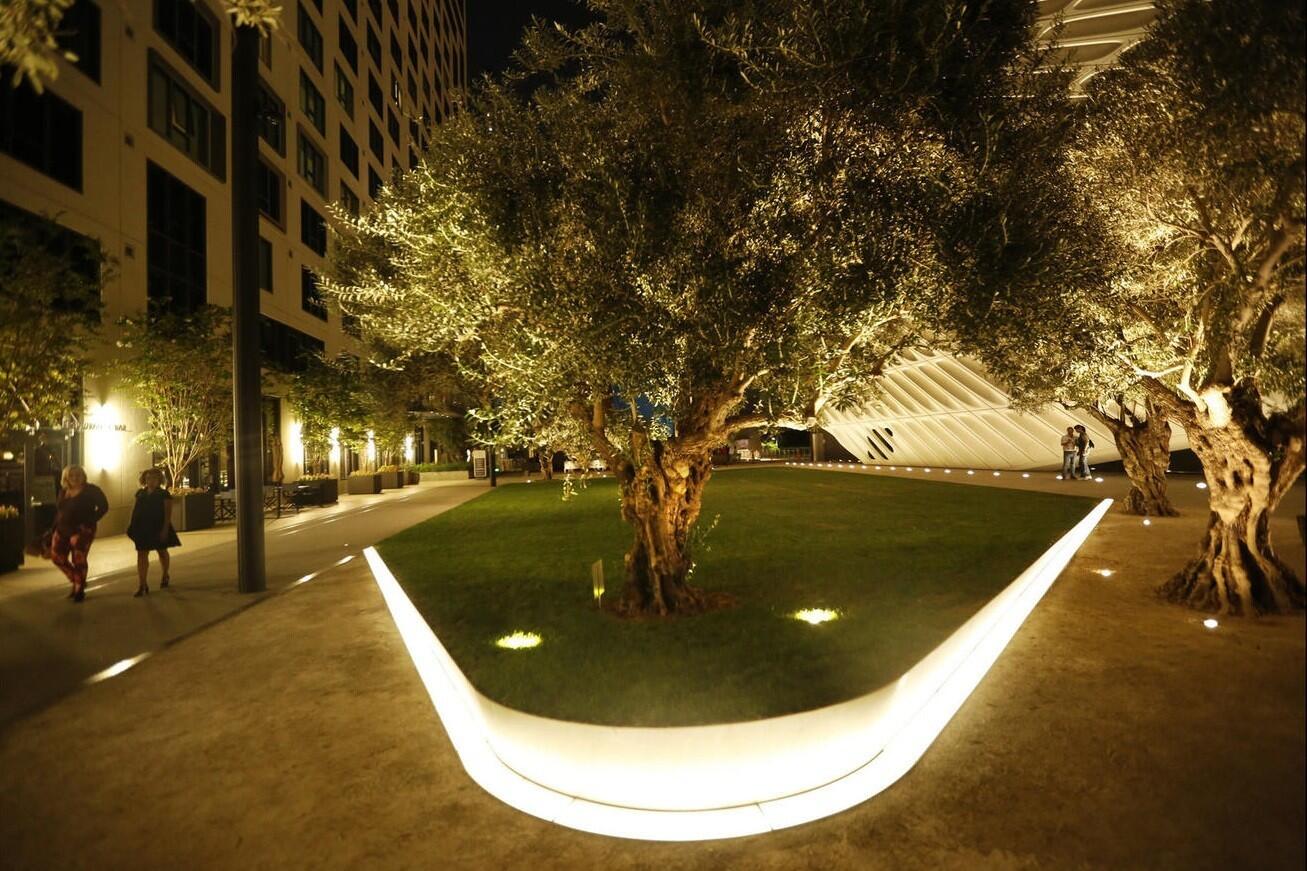
The lawn is small scale, less than one-quarter of the long, linear plaza and is designed to recover rainwater courtesy of a sump pump behind an adjacent restaurant.
(Mark Boster / Los Angeles Times)Advertisement
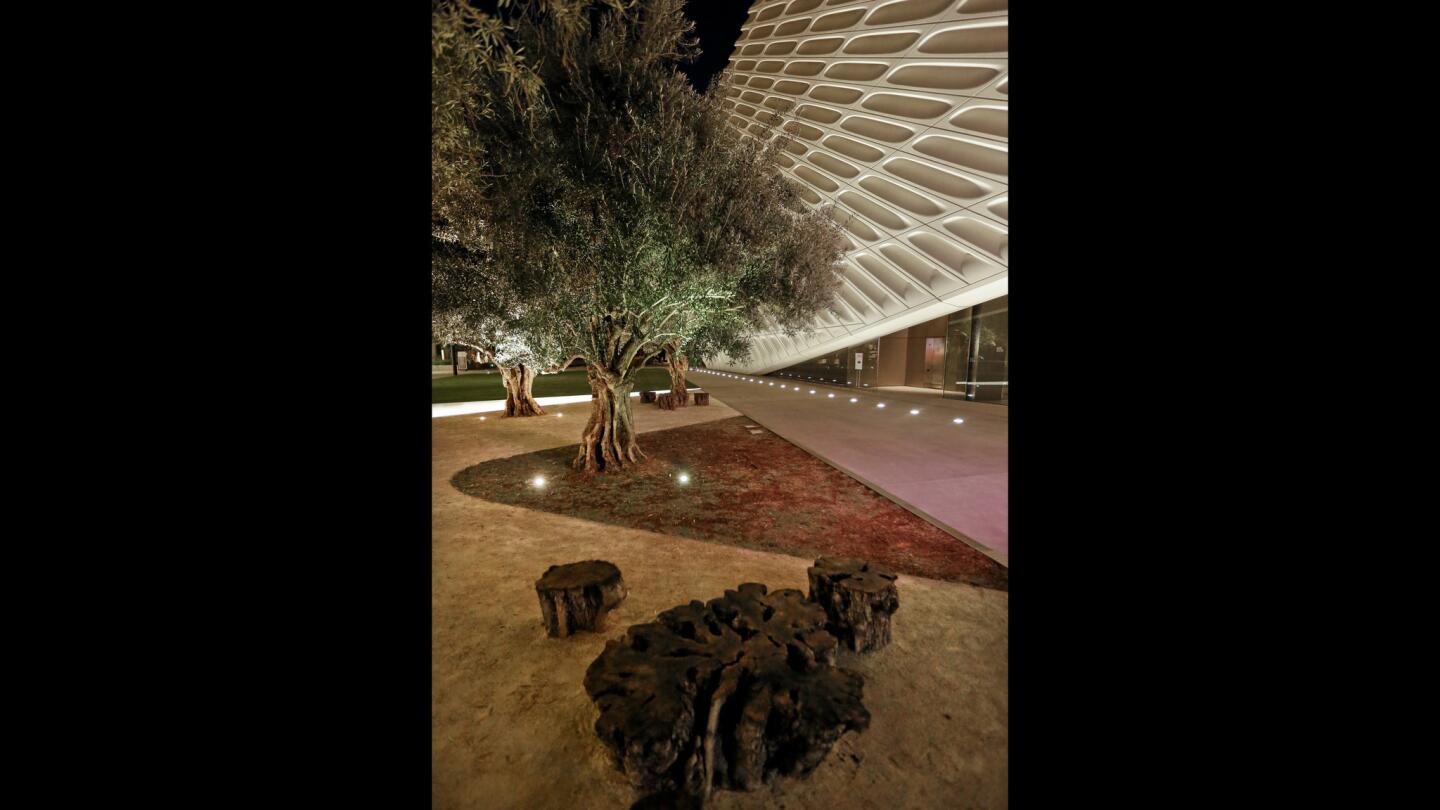
Repurposed tree trunks at Broad Plaza provide a resting spot for visitors and passersby.
(Mark Boster / Los Angeles Times)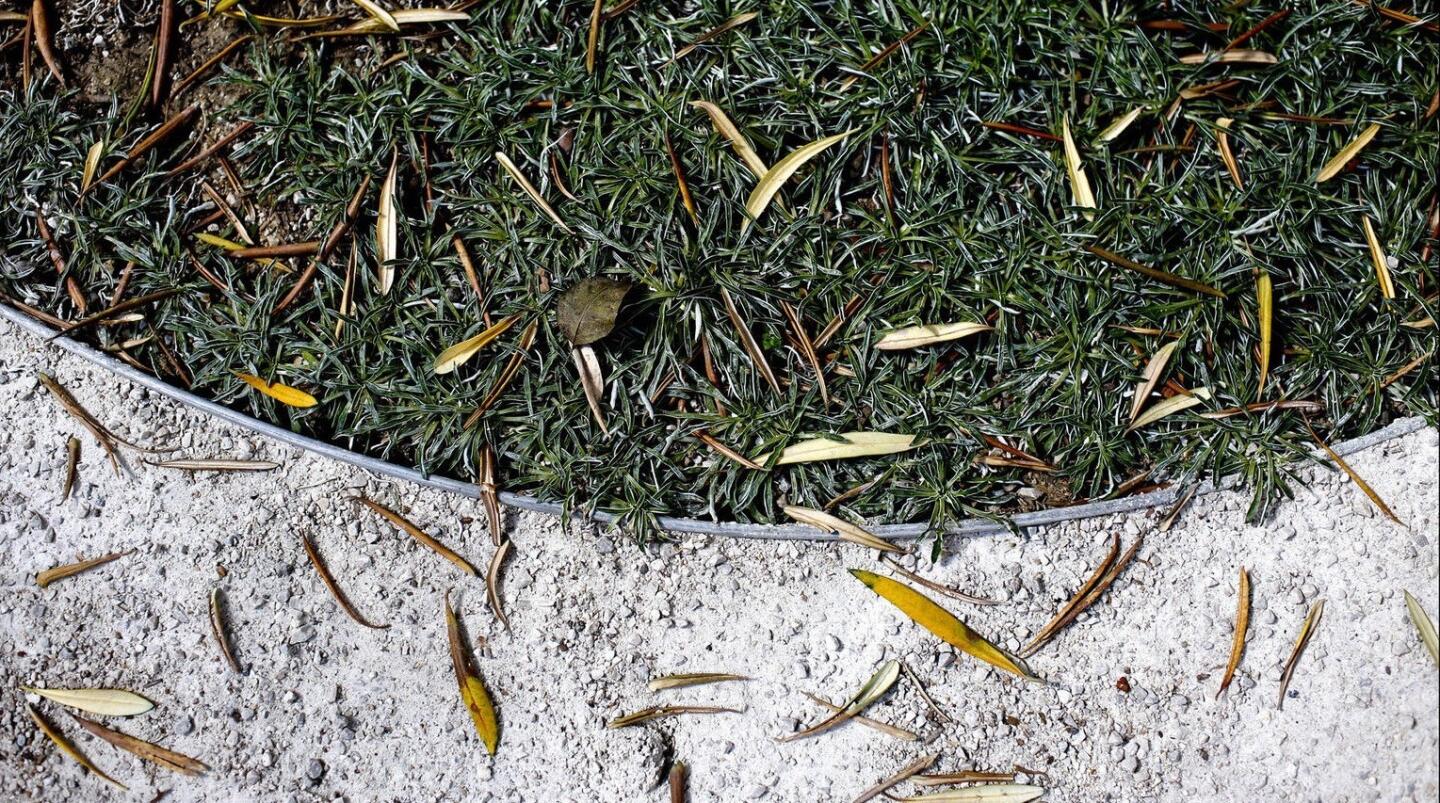
Olive leaves fall on the white decomposed granite walkways and the dymondia in Broad Plaza.
(Mark Boster / Los Angeles Times)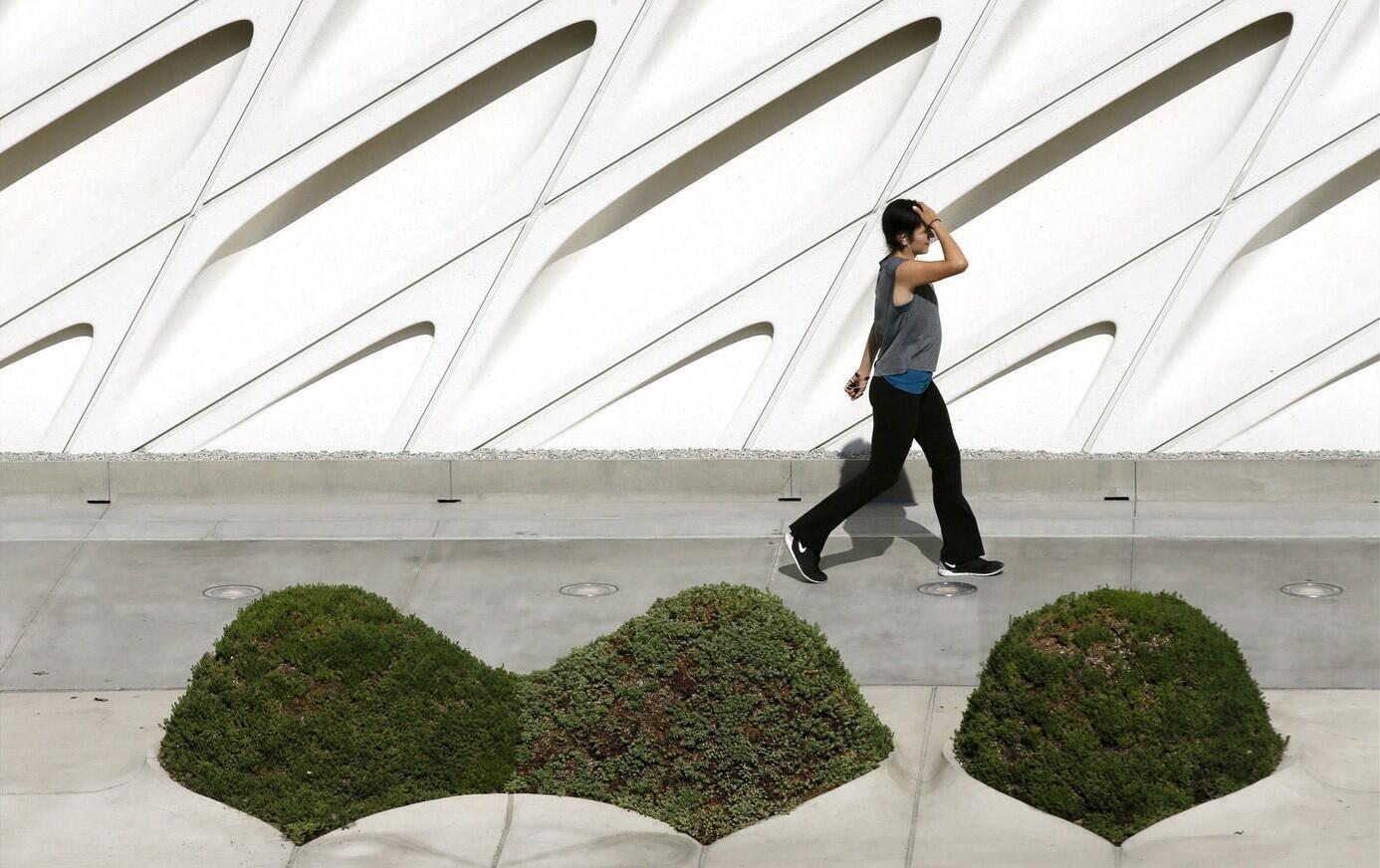
Sedum-filled planters the architects call “eruptions” are placed along the Grand Avenue sidewalk in front of the Broad museum, offering an interesting juxtaposition to the large exterior grill of the structure.
(Mark Boster / Los Angeles Times)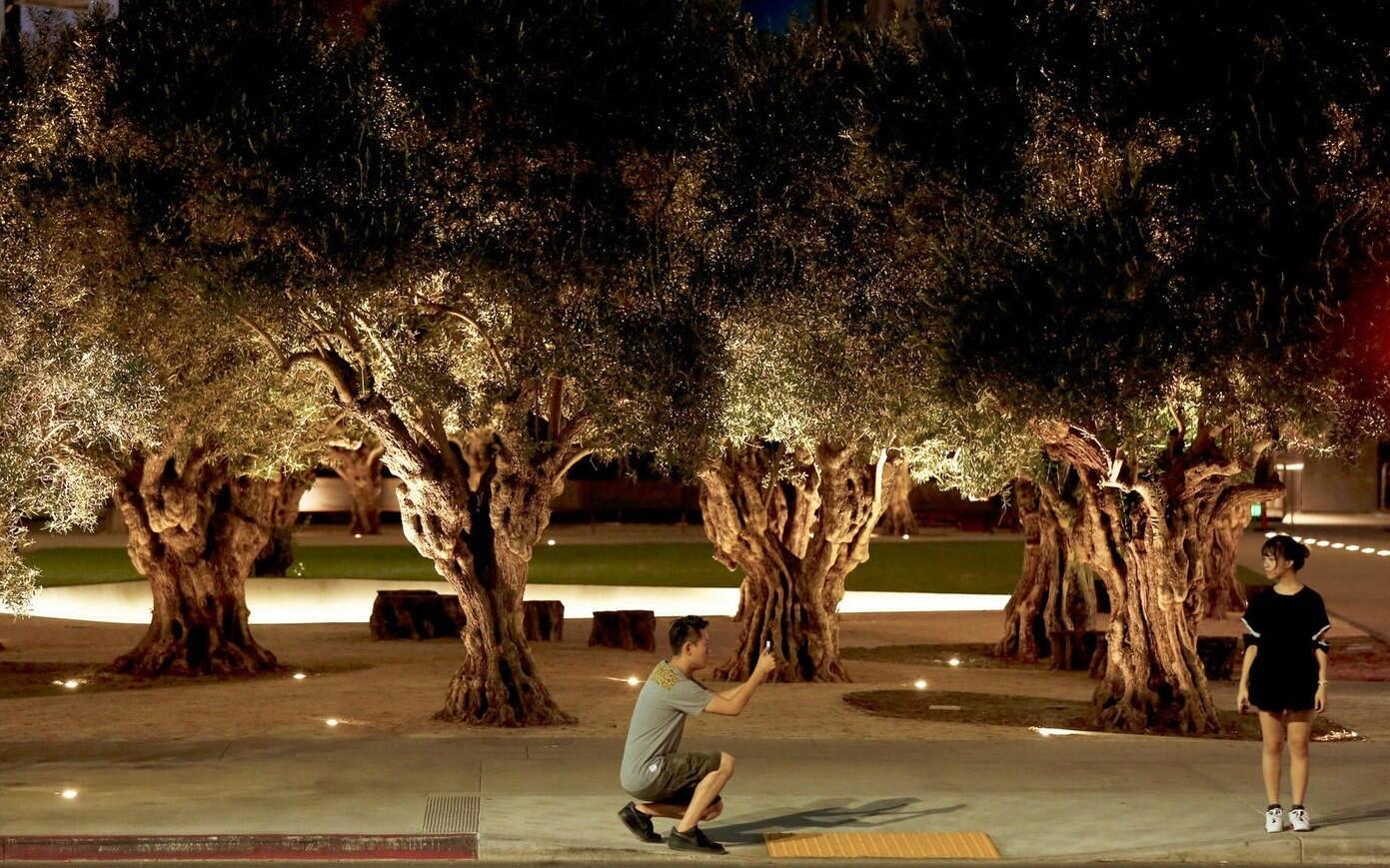
Where the Broad Museum is modern and new, the olive trees are gnarled and ancient. “They have character,” says landscape architect Walter Hood of Oakland-based Hood Design Studio. “They are like the grandparents. They’ve been through it all.”
(Mark Boster / Los Angeles Times)Advertisement
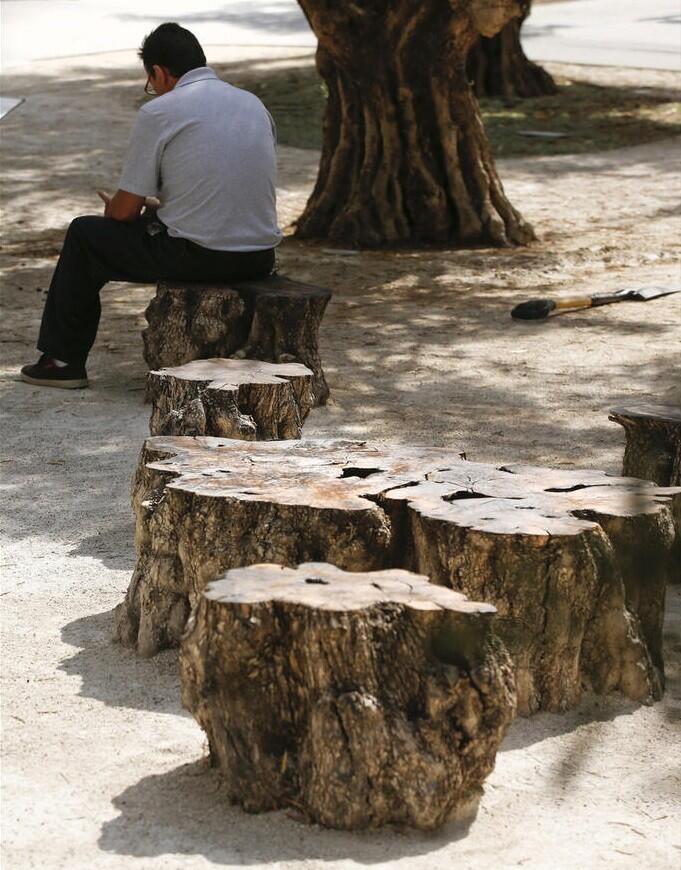
Underneath the canopy of olive trees, visitors will immediately notice a group of low seats composed of repurposed tree trunks from the same nursery as the olive trees.
(Mark Boster / Los Angeles Times)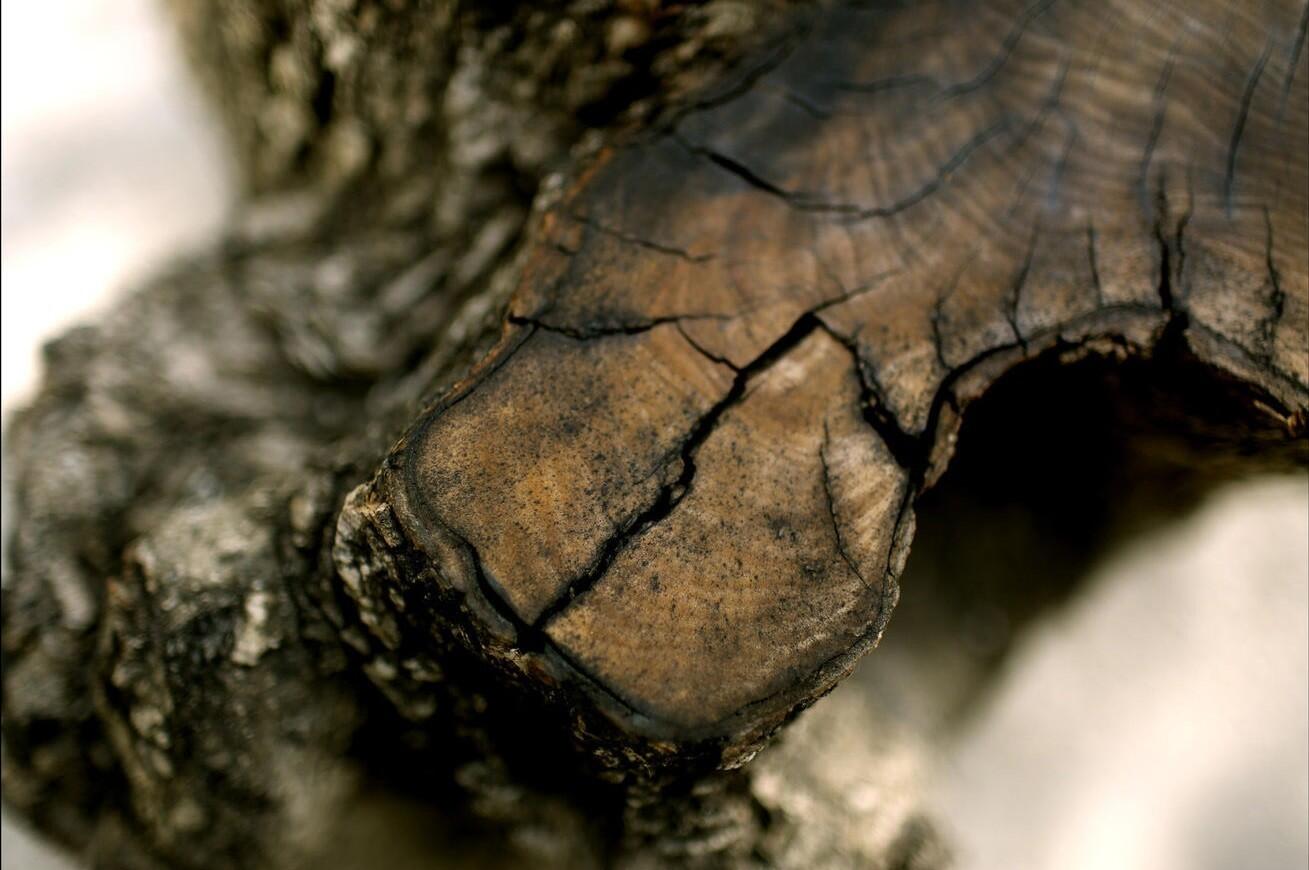
Detail of the repurposed tree stumps positioned under a canopy of olive trees in Broad Plaza.
(Mark Boster / Los Angeles Times)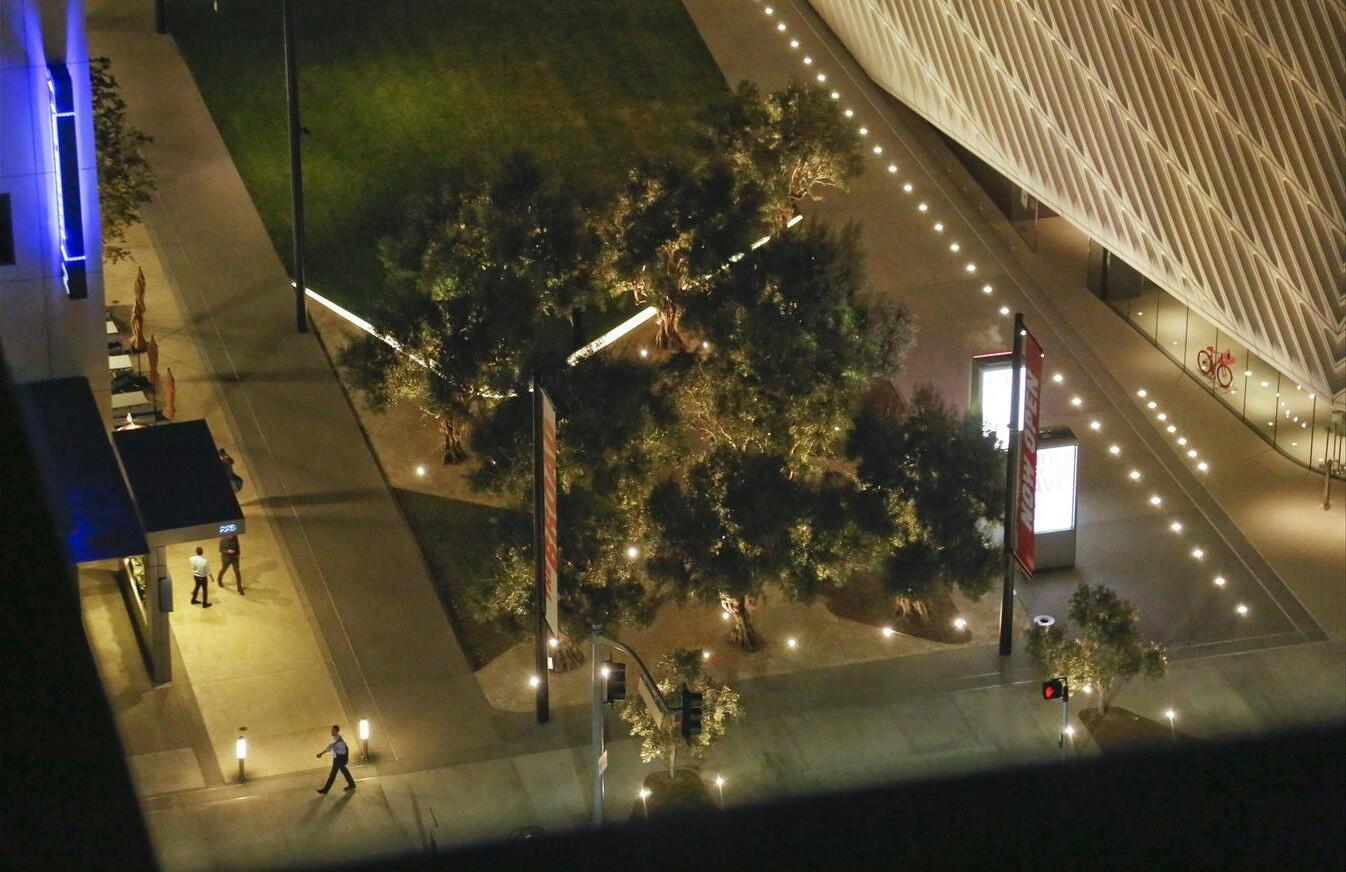
The driving force behind the 24,000-square-foot plaza adjacent to the newly opened Broad museum was simply to create an environment that would bring people in from the street.
(Mark Boster / Los Angeles Times)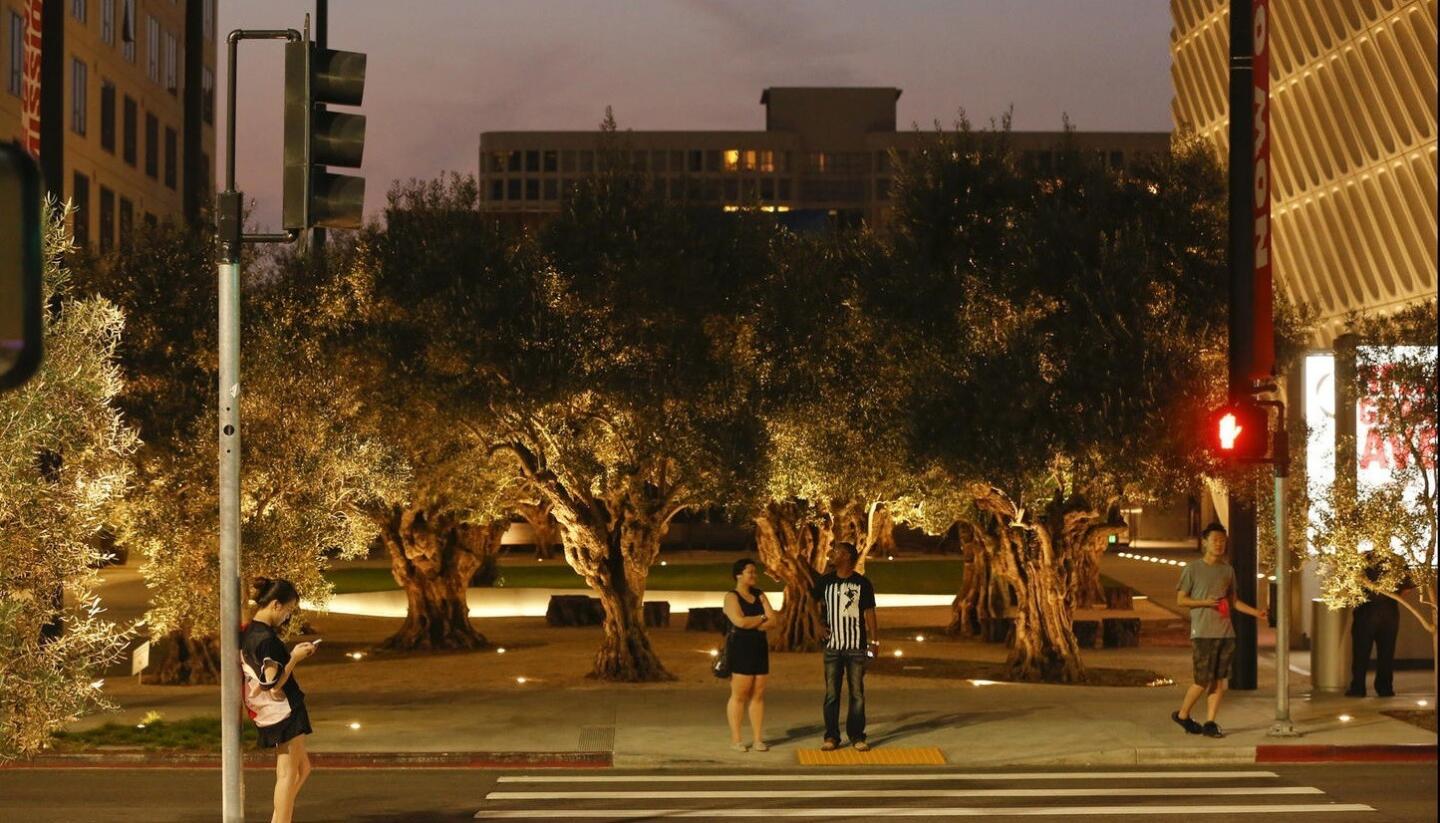
In an effort to connect the cultural institutions on Bunker Hill, the architects extended the landscape beyond the plaza. At 2nd Street, younger olive trees are planted in a Grand Avenue median that intersects a new crosswalk designed to create visual access from one side of Grand to the other.
(Mark Boster / Los Angeles Times)Advertisement
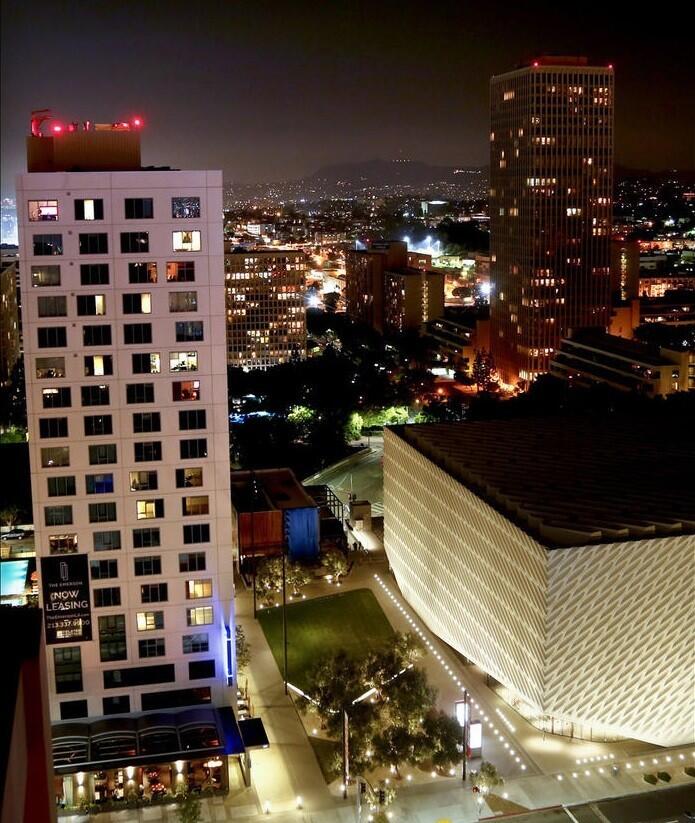
A view of Broad Plaza from above, showing it’s proximity to the urban landscape, considered shared space that exists between apartment dwellers, museum-goers and lunchtime visitors.
(Mark Boster / Los Angeles Times)


